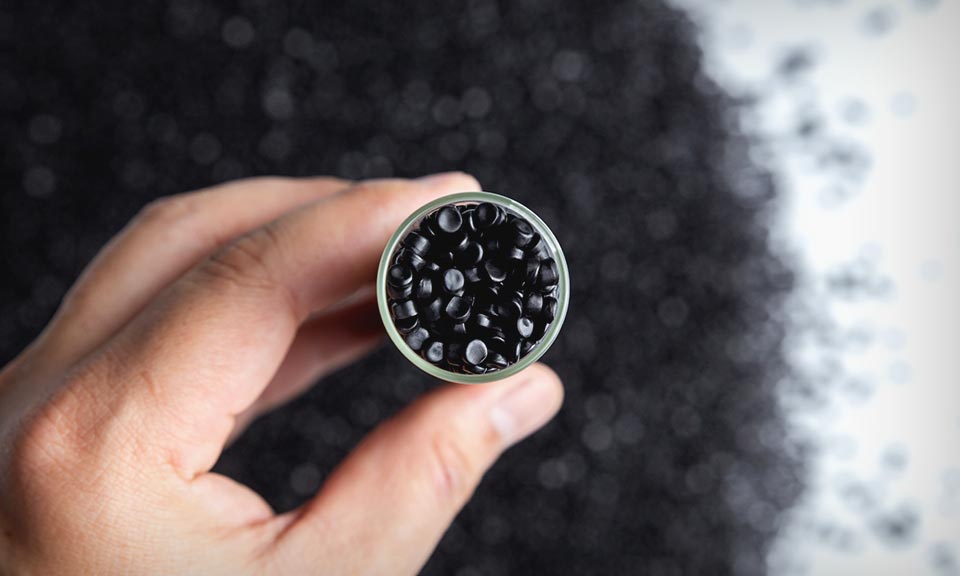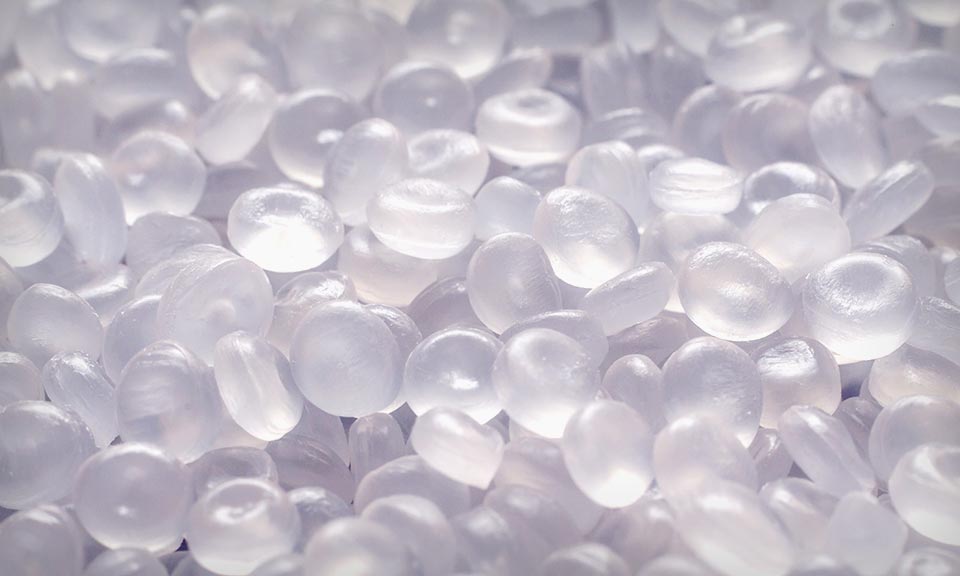Borealis won't idle petchems capacity despite gas shortages, high costs: CEO

Austrian petrochemical maker Borealis does not plan to idle any production capacity next year and is focused on growing its operations globally despite natural gas shortages in Europe, high energy prices and softer demand in high growth markets such as Asia, the company's CEO told S&P Global Commodity Insights.
"We are growing and not idling capacity," Thomas Gangl said in a recent interview. "We produce what we need, and we are changing the grades. We are increasing our market share continuously. We are producing products in segments that are more stable in pricing and margins."
Borealis, in which Austrian energy company OMV has a 75% stake, saw the utilization rate of its steam crackers in Europe plunge to 63% in the third quarter, compared with 88% a year earlier.
The company's polyethylene sales volumes, excluding those from its joint ventures, dropped 16% year-on-year in the third quarter, while polypropylene sales volumes, excluding those from its joint ventures, fell 19% during the same time period.
"We see also that some units from some companies are not producing anymore, so the demand reduction is having an impact on the operating rates also on Borealis," said Gangl.
"We are coming out of a period where the demand was high and availability was sometimes not given, especially in Europe; prices for polymers increased significantly and that is something that cannot continue for a long time. Prices are coming down to a more normal level, and with less demand prices will be under pressure."
European petrochemicals producer BASF on Oct. 26 lowered its expectations for global industrial and chemical production in 2022, saying the chemical sector in Europe needs to cut costs because of high energy prices.
European gas prices, which spiked in August amid lower supply from Russia, has since eased amid a mild winter and high gas storage levels.
Platts, part of S&P Global, assessed on Nov. 4 the European benchmark, the Dutch TTF month-ahead, at Eur114.85/MWh, easing 7.88% on the day. The marker, which started the year at Eur85.75/MWh, is down from Eur319.98/MWh reached on Aug. 26.
"In the long run the (energy) prices need to come down," said Gangl. "This is clearly indicating the disadvantage high gas prices have on the chemical industry."
Borealis started in October charging an extra Eur180/mt for its European products to cope with the high gas and energy prices, Gangl said.
"We introduced an energy price adder to our polyolefins because we cannot digest those high energy prices," he said.
"For our assets I do not see any impact (of gas shortage) in that respect but of course in terms of demand, the high inflation and high energy prices are putting pressure on demand."
Even in Asia, where most future growth is expected to come from, is showing signs of weaker demand. Additional capacity that is coming onstream during the down cycle is exacerbating the soft demand outlook, said Gangl.
"What we see at the moment (in Asia), demand is not picking up as planned and additional capacities are coming onstream," he said. "It will take a few more years for these additional capacities to be digested by the market growth."
Despite the dim outlook, Borealis is forging ahead with projects worldwide as part of plans to hit global production capacity of 600,000 mt in 2025 from 100,000 mt in 2019, said Gangl.
Borealis is looking at both mergers and acquisitions and organic growth to achieve its 2025 target.
Bayport Polymers has started commissioning Baystar, a one million mt/year ethane cracker at its Port Arthur, Texas site in the US. The project is a 50/50 joint venture between Borealis and TotalEnergies.
"Products from the new unit will become available from next year," said Gangl.
"With the existing units, you are not always running at 100%. It (ramp-up) depends on the market situation and the grades we are producing."
Borouge 4, the latest expansion of Borealis' joint venture with Abu Dhabi National Oil Co. in the UAE, is on track for start-up in 2025, he said.
Borouge raised its third-quarter production capacity by 7.9% on the year following the completion of its fifth polypropylene unit (PP5) in February.
The $6.2 billion expansion project of the Borouge complex in the industrial hub of Ruwais includes the construction of a 1.5 million mt/year ethane cracker and two polyethylene plants, making the site the world's largest single-site polyolefin complex at 6.4 million mt/year.
The completion of a delayed propane dehydrogenation plant being built at Kallo, Belgium, is still expected to be finished by mid-2024, Gangl said. Borealis had announced it would retender the majority of the project's construction contracts following termination of all contracts with the main contractor IREM Group.
"As we are delayed in the project, the need for products will be even higher than before," said Gangl. "We see demand in this market for the volumes significantly increasing over the next year so there will be high demand and we will ramp up as soon as possible."
News
Geopolitical pressures — including rising resource nationalism and a year in which over 50% of countries will be having elections — as well as inflationary pressures have sent energy transition progress into “discord.” A specialty chemicals panel session held March 19 at the World Petrochemical Conference by S&P Global in Houston, Texas, tracked the challenges and opportunities of the energy transition for the industry. Speaking at the session, Roman Kramarchuk, head of climate markets and policy analytics at S&P Global Commodity Insights, said that if the short-term scenario continues, global temperatures could rise 2.4 degrees Celsius by 2100, far above the Paris Agreement’s goal of a 1.4-degree increase. “Over the past few years, we’ve certainly been trending more towards our ‘discord’ scenario,” Kramarchuk said. “We’re trending toward a longer runway for fossil fuels and less [greenhouse gas (GHG)] emission reductions. This is a case of less GDP growth, less trade and less technology transfer.” Since 1990, world GHG emissions have grown 45%, with mainland China, India and the Middle East representing the biggest increases in emissions, at 304%, 241% and 181%, respectively. Over the last 25 years, the Commonwealth of Independent States and the EU have cut their emissions the most, with decreases of 39% and 31%, respectively. The US has cut emissions 1% since 1990. Of S&P Global Commodity Insights’ three energy and climate scenarios, only one, “green rules,” has global temperatures near the Paris Agreement’s 1.5-degree goa, with an expected increase of 1.7-degrees Celsius by 2100l. The “green rules” scenario, however, assumes more technology transfer, cooperation and policy-driven outcomes than is currently happening. “2030 is not that far away,” Kramarchuk said, “and when you think about what the energy transition will take, solar panels can be constructed fast, but anything beyond that — like an onshore or offshore wind plant or a nuclear unit — we’re getting into lead times of 5, 10, or 20 years.” While the US Inflation Reduction Act has helped speed these transformational energy products along, there are still a lot of slowdowns in permitting, especially in Europe. “We joke that there needs to be a ‘Complexity Reduction Act’ in Europe to move things forward,” Kramarchuk said. Harald Schwager, deputy chairman of Evonik Industries AG’s executive board, added that companies are stuck in a hard place. Evonik has signed power purchase agreements (PPAs) to be powered fully by renewable energy by 2030. “The question will be, will production capacity be hampered by the regulatory process and will we have sufficient infrastructure in place to transport enough renewable power for site demand by then,” Schwager said. Distant peaks Commodity Insights’ energy and climate base case pegs the peak years for coal, oil and gas demand to be 2022, around 2030 and 2040, respectively. “When there is a surprise need for energy,” Kramarchuk said, pointing toward the COVID-19 pandemic and a drought in China, which caused a boost in coal usage, “fossil fuels fill that need.” However, “there’s more investment in renewable capacity than we’re seeing in upstream oil and gas,” Kramarchuk said. Under all scenarios, renewable electricity will be the lion’s share of newly generated energy sourcing. Rebecca Liebert, president and CEO of Lubrizol Corp., said that it is the duty of specialty chemical producers to be agile and proactive in bringing innovative and more sustainable products to market. “Political and technical factors are all things we must account for in our bring-to-market timelines. And we get it right a lot of times, but we get it wrong some of the time. Sometimes you get to market before the market is ready for your product. And I think that’s great, to have a solution on the shelf as the market comes along.” Schwager agreed: “In the specialty chemical industry, we have more good ideas than we have money. And there’s no regret on moves for improved efficiency.” While there has been little movement on target setting and market-based mechanisms for growing renewable energy, COP28’s first global stocktake committee called for “countries to contribute to triple global renewable energy capacity and double global energy efficiency by 2030.” “Even though we are heading for the discord path right now, with all the technology solutions and innovation pushes, we’ll be shooting up ahead towards the ‘green rules’ scenario in the long-term,” Kramarchuk concluded. This article was first published in chemweek.com .

News
Two NGOs appealing against permits Initial plan was to start end of 2023 BASF is facing a delay of the operational start of its newly built precursor cathode active materials (pCAM) plant in Finland due to two non-governmental organizations (NGOs) appealing against already-granted permits, a spokesperson for the German petrochemicals company confirmed to S&P Global Commodity Insights Feb. 27. BASF initially aimed to start commercial production at the Harjavalta plant at the end of last year. “The necessary permit to operate this plant has been granted last year by the relevant authorities,” the spokesperson said. “However, two NGOs have filed an appeal against the already granted permit. Next steps and timing will depend on the furtherance of the judicial process before the Vaasa Administrative Court,” said the spokesperson. The pCAM plant will use renewable energy resources, including hydro, wind and biomass-based power and will be supplied with nickel and cobalt from Nornickel’s adjacent refinery. The plant is part of BASF’s plan to supply the battery industry and subsequently automotive industry with lower carbon emission cathode active material. Platts, part of S&P Global Commodity Insights, assessed cobalt metal in-warehouse Rotterdam at $15/lb on Feb. 26, stable from the previous assessment Feb. 23, while the nickel-cobalt black mass EXW Europe payables was at 54% Feb. 26, also stable.

News
The petrochemical landscape has been transformed in recent years by new technologies and the global energy transition, resulting in numerous production pathways and the development of more sustainable products. S&P Global Commodity Insights has created Chemical Connections , an interactive chart which shows the links between chemicals, from upstream feedstocks to derivative products. The second slide offers a map showing our price assessments and benchmarks for chemicals across the value chain around the world. These prices are used by market participants daily to write contracts, monitor their markets and achieve full transparency around transactions.